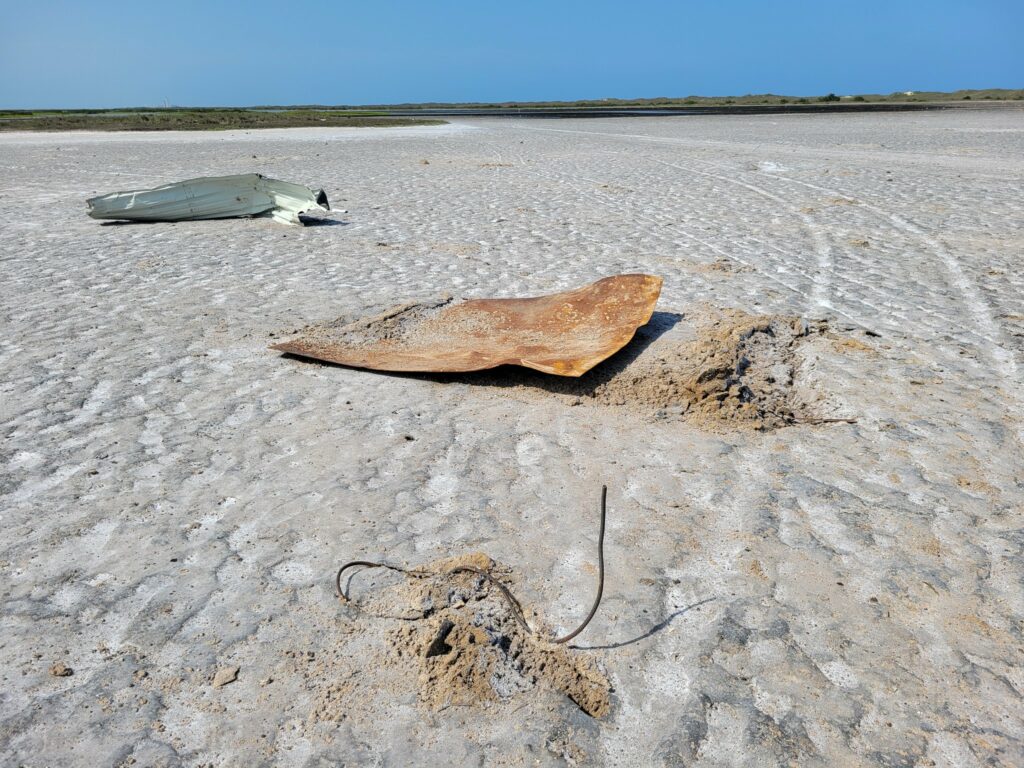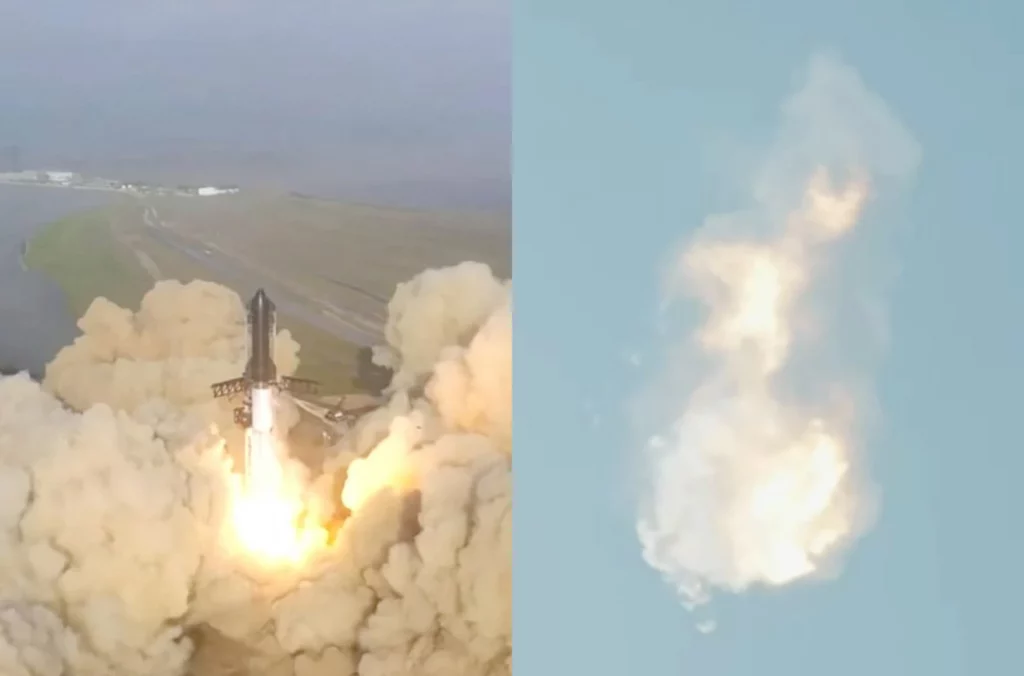
A timeline of the first 18 days
Events are moving at a breakneck pace since Friday, April 14, when the FAA issued SpaceX its first ever license to launch the full Starship/Superheavy stack from its Starbase facility on Boca Chica Beach.
Here’s a recap of events so far.
The FAA finally gives SpaceX a license, environmentalists allege the agency may have “coordinated” the timing
Controversy around the inevitable launch began immediately
Internal emails leaked to me show that SpaceX is worried that lawsuits will derail their launch plans. It seems like a coordinated effort was made to ensure that nothing could be filed in time to stop the launch, which is planned for this coming Monday. https://t.co/eid2UEkzAR
— Gaige Davila (@GaigeDavila) April 15, 2023
An anonymous source leaked internal SpaceX emails to Gaige Davila, my colleague at San Antonio’s NPR station Texas Public Radio (TPR).
The emails documented conversations at SpaceX about how the space startup was worried that a Starship launch would be delayed if environmental advocacy organizations had any opportunity to bring lawsuits.
Read Gaige Davila’s article on Texas Public Radio:
“FAA issues long-awaited launch license to SpaceX’s South Texas Starship”
When the time came to issue the license, the FAA did so just minutes before courts closed that Friday. Minutes after that, SpaceX announced they would launch Starship first thing Monday morning.
Environmentalists who saw the emails alleged that this timing seemed to signal coordination between SpaceX and the FAA, in order to prevent any environmental advocacy organizations from having the time to file a lawsuit.
Join the discussion on this and other stories in the Rio Grande Valley on the community Facebook Group RGV News, Politics and Culture.
Looking at the fragile ecosystem on Boca Chica Beach after the first launch attempt failed
The launch scheduled for the following Monday did not go according to plan. A frozen pressurant valve prevented Starship from getting off the launchpad, with Elon Musk tweeting that SpaceX would try again “in a few days”.
📌 A quick update on SpaceX after their first-day failure. Plus: some supporters now believe the FAA license is a guarantee against environmental impact–why a NASA mission carrying 72 lbs of plutonium and the Deepwater Horizon prove that totally wrong: https://t.co/ihvqSccnJ4
— Pablo De La Rosa (@pblodlr) April 17, 2023
I wrote a quick update on this blog later that day in response to a multitude of posts on social media from some of the local community that seemed to reflect a new belief–that the FAA license meant that any negative environmental impact was now mitigated.

Unfortunately, probably no one was prepared for just how quickly that false sense of security turned out to be.
Read my web post here:
As the public waited to hear back about when a second launch attempt might take place, Davila met with Coast Bend Bay and Estuaries, one of the organizations that would later be present at Boca Chica to survey the area post-launch.
The article he wrote from that conversation is a great explanation of the ecosystem that’s at stake at Boca Chica.
From Gaige Davila’s article:
“So we’ve got 15,000 shorebirds right in front of us here. And as I use my binoculars down the way, I can see a whole bunch more scattered way down that way to the south,” he said.
LeClaire said this is proof enough that this area is not an empty space prime for space colonization, as some say.
“So, if you don’t know what to look for or where to look, it’s going to look like a wasteland, but it’s not,” he said.
The fragile ecosystem on Boca Chica may not be obvious to people looking out on that beach, especially if they’ve never been here. But the algal flats are one of the most unique habitats on earth.
From UT-RGV’s Ancient Landscapes of South Texas Program:
Felt-like mats of microscopic, single-celled, blue-green algae or algal mats are prolific on the flats. They are most extensive on areas that alternate exposure and submergence in regular cycles. On the ground the algal mats appear as very dark areas surrounding the lagoon. With each tidal inundation, thin layers of clay are deposited from suspension. The algal mats that develop on the moist surface commonly crack and peel from the underlying sand and clay during drier periods between tidal floods.
Read Gaige Davila’s article on Texas Public Radio:
Fragile Boca Chica ecosystem endures the impact of SpaceX Starship launches
The second attempt on 4/20: Starship lifts off and explodes

On the morning of Thursday, April 20 the Starship/Super Heavy SpaceX rocket stack made liftoff in its full prototype configuration for the first time since receiving FAA approval the previous Friday. Four minutes later, the rocket exploded in mid air northeast of Boca Chica.
Local freelance journalism photographer Michael Gonzalez and Gaige Davila were at Boca Chica Beach that morning for Texas Public Radio.
SpaceX launched their Starship rocket from their Boca Chica facility on April 20, 2023. Onlookers cheered at Isla Blanca Park at South Padre Island when the rocket launched and subsequently exploded 4 minutes after.
— Michael Gonzalez (@michaelgonzlz) April 20, 2023
Assignment for @TPRNews @NPR pic.twitter.com/7mArXaFkTt
From my article for Texas Public Radio:
Elma Arredondo, a retired school teacher, worked at Garriga Elementary in Port Isabel, just five miles from where SpaceX has its launch base.
“I was just told ‘ashes’ fell from the sky and on the Garriga Elementary kids that were outdoors,” she said. “They all ran inside when it started ‘raining.’ “
Arredondo said that she has been concerned about SpaceX “from the very beginning.”
“What kind of danger did Cameron County bring to our community when SpaceX was welcomed here?” she asked. “As a retired school teacher, I immediately thought of Garriga.”
Seeing a lot of confusion on social media about what happened that morning, I also went on YouTube to summarize my report from earlier that day.
Watch the video summary of my debris explosion report below:
I didn’t hear back from the FAA until a day later, when they confirmed that an “Anomaly Response Plan” was activated at Starbase at that time. We now know that the “anomaly” turned into an FAA “mishap”, a more serious incident requiring a more comprehensive response.
The FAA defines a mishap using multiple criteria, including whether a launch resulted in “unplanned substantial damage”, according to FAA documentation.
We also now know that three of 33 engines were shut down before liftoff, and that the destruction of the cement base that scattered debris over miles of federally protected wildlife habitat wasn’t something that SpaceX predicted.
Read my article on Texas Public Radio here:
Port Isabel reports ‘raining particulates’ after SpaceX rocket explodes over the Rio Grande Valley
SpaceX non-disclosure agreements with local public entities uncovered

In the days after the Starship explosion, I reached out to Erin Sheridan on a story she’d been working on for some time. Erin has written for local publications in the Rio Grande Valley on the topic of SpaceX in the past, and now had what was essentially a collection of NDAs or challenges to public information requests for NDAs between SpaceX and local public entities.
From Sheridan’s article for Texas Public Radio:
Texas Public Information Act (TPIA) requests reveal that not only have public entities in Cameron County signed non-disclosure agreements (NDAs) with SpaceX, but those entities have also sought to keep those NDAs private despite ongoing relationships with the company.
Two NDAs, one signed by the University of Texas Rio Grande Valley in April 2020 and another by the Brownsville Public Utilities Board (BPUB) in March 2017, were released only after the Office of the Attorney General (OAG) in Texas ordered them to become public.
The city of Brownsville is currently fighting the release of any SpaceX-related NDAs. Cameron County previously acknowledged the existence of an NDA with SpaceX. However, that NDA was never released and has since disappeared.
This story could really have come out at any time, but coincided with the events after the FAA license was issued to SpaceX.
Read Erin Sheridan’s article for Texas Public Radio here:
Rio Grande Valley groups fight to keep SpaceX non-disclosure agreements private
The FAA grounds Starship and a post-launch survey by Coast Bend Bay and Estuaries shows extensive damage
What the lift off and explosion at Starbase meant in terms of environmental regulation was not clear immediately after the event, and many questions about actual impact remain unanswered. What we now know for sure is that the FAA has grounded Starship in order to study those effects and learn more.
Coast Bend Bay and Estuaries is one of the organizations that was able to survey the damage at Boca Chica beach after the liftoff. Davila spoke to them about what they found in the days immediately after.
Watch Davila’s NPR radio feature on the post-launch survey below:
From Gaige Davila’s article for Texas Public Radio:
The U.S. Fish and Wildlife Service (USFWS) documented that the debris cloud deposited material as far as six-and-a-half miles north of the launch pad. The agency said in a statement that the debris cloud was made of pulverized concrete.
The launch pad’s destruction could be seen in the mudflats and dunes south of it and in the algal flats to the north. Broken concrete — some pieces the size of golf balls, others the size of car engine blocks or larger — was spread out over nearly three-quarters of a mile in some directions.
Craters from large pieces of concrete were as large as six feet across and a few feet deep. Some pieces hit the ground so hard they were submerged in the sand, leaving only an empty crater with rebar jutting from it.
As part of Davila’s report, I generated a quick map of the damage from the information he was able to gather:

Read Gaige Davila’s article for Texas Public Radio here:
SpaceX is grounded after rocket explosion caused extensive environmental damage
Environmentalist groups sue the FAA
On Monday, May 1 several environmentalist groups sued the FAA in federal court, saying the agency should have never let SpaceX launch Starship without an Environmental Impact Statement.
Update from today–several groups are suing the FAA in federal court over SpaceX. The groups say the FAA should have NEVER allowed Starship to launch without an EIS ("Environmental Impact Statement"). They state "The FAA has acknowledged many more 'anomalies' are expected." pic.twitter.com/bWvh0POjrT
— Pablo De La Rosa (@pblodlr) May 1, 2023
This is a developing story, and there will certainly be much more to report over the next few weeks on SpaceX, Starship, the FAA, the environmentalist groups, and the local Rio Grande Valley community around the launch base.
More to come.